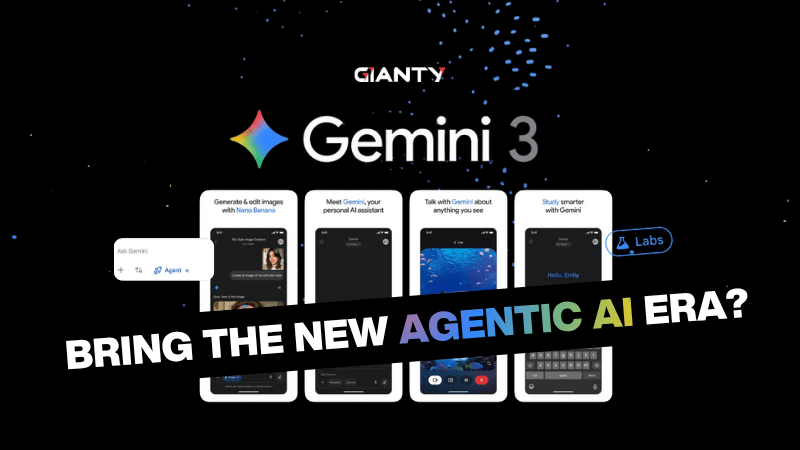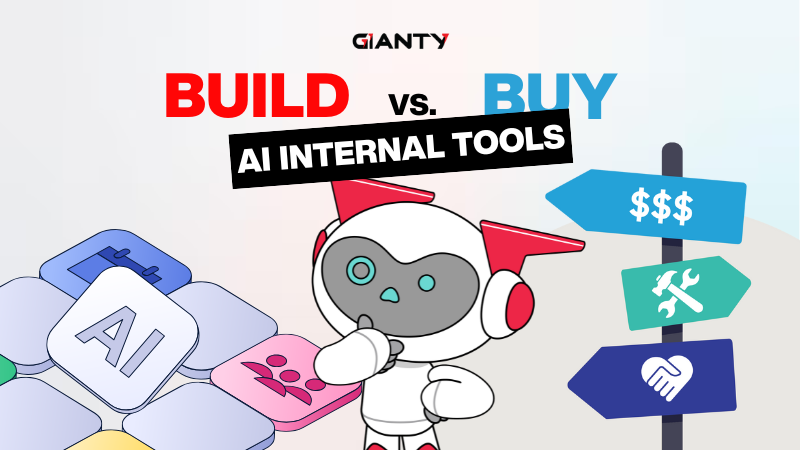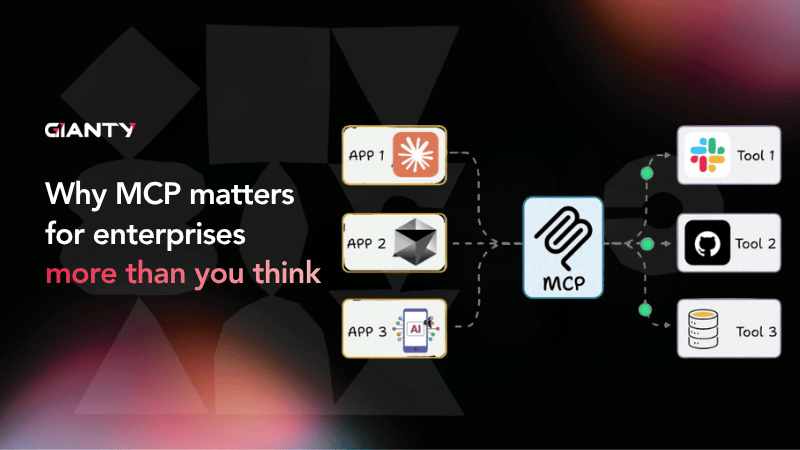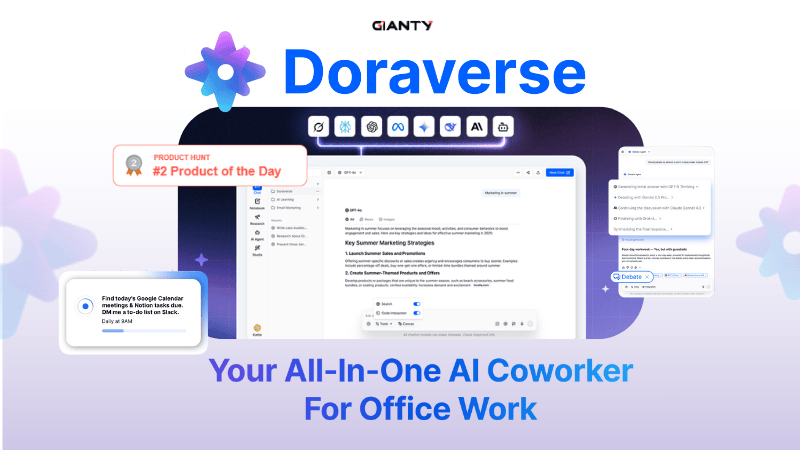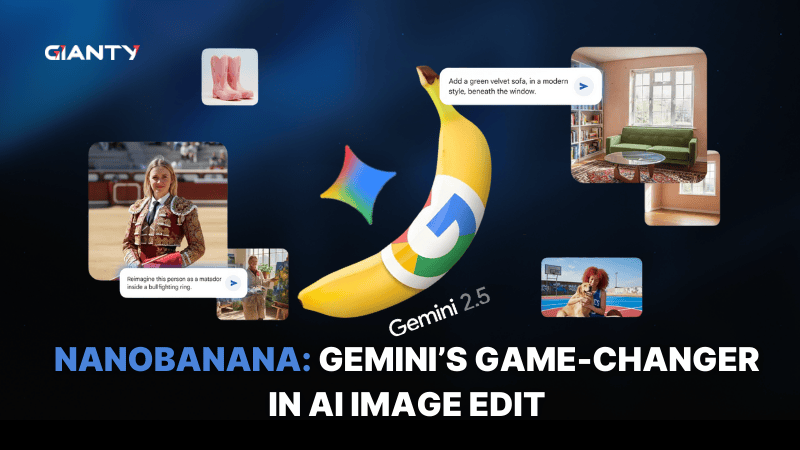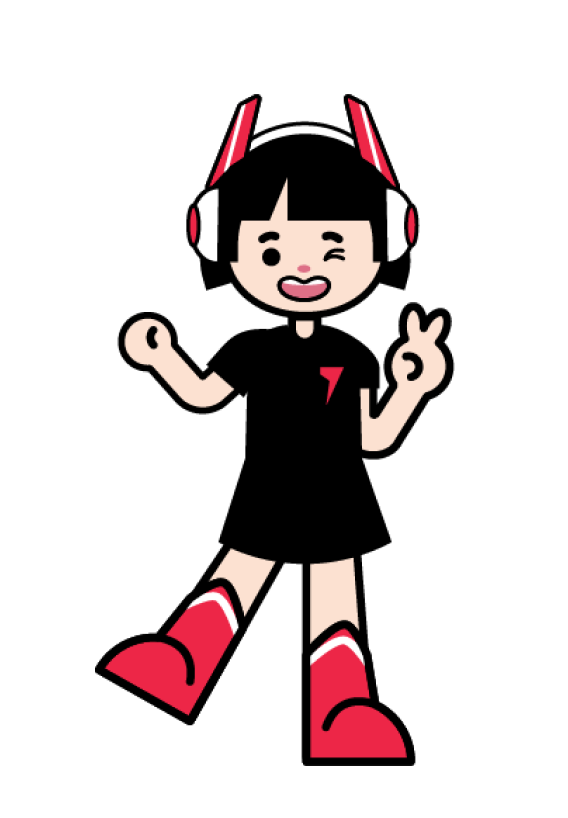AI is moving fast. So should your business. AI Development is no longer confined to R&D labs or pilot projects. By 2025, AI has become a core enabler of productivity, automation, and decision-making at scale.
For enterprises, the challenge has shifted from “should we adopt AI?” to “how do we deploy AI efficiently, securely, and profitably?”. Yet many large organizations still struggle to translate strategy into execution. Building internal AI teams is slow and expensive. Data governance and integration hurdles stall progress. Meanwhile, competitors move ahead with smarter products, faster operations, and leaner cost structures.
That’s why AI development outsourcing has become a strategic lever for enterprise acceleration – not a stopgap. Done right, it enables you to scale capabilities, reduce time-to-market, and convert innovation into measurable ROI.
What AI Development Outsourcing Really Means in 2025
AI outsourcing is no longer limited to experimental models or lab-based research.
It now covers the full journey of transforming ideas into production-ready solutions from proof of concept (PoC) to automation, and ultimately, AI-powered products and copilots.
Outsourced AI Development teams or an AI partner now handle:
- End-to-end data engineering and model lifecycle management
- Large language model (LLM) customization and orchestration
- Workflow automation and process intelligence
- Integration with enterprise software (CRM, ERP,…)
- Continuous retraining, governance, and performance monitoring
This approach combines deep technical specialization with business alignment, helping enterprises deploy AI at scale without reinventing their internal structure.
Key Business Advantages of Outsourcing AI Development
Immediate Access to Advanced AI Capability
Hiring data scientists, AI engineers, and automation experts is tough — especially for large organizations where talent is already stretched thin.
Outsourcing gives you instant access to trained teams who have done this many times before. These teams already understand the tools. They bring ready experience that can save you 6–12 months of setup time.
- Model development and fine-tuning (LLMs, RAG pipelines)
- API-based AI integration
- Automation with LangChain, Zapier, or custom Python workflows
- Cloud-based monitoring and compliance logging
Speed and Agility in a Market that Moves Quarterly
Enterprise transformation cycles used to span years. In AI, innovation happens in quarters. By outsourcing, organizations can move from proof of concept (PoC) to production deployment in months even in weeks – not years.
Pre-configured AI workflows, scalable infrastructure, and agile sprints allow for rapid testing and iteration. This agility helps large companies experiment responsibly, validate ROI early, and avoid lengthy internal bottlenecks.
Flexibility
Enterprise AI demand often changes. You may need a large team during development, but only a few engineers once it’s running. Outsourcing gives you the ability to scale your team up or down instantly, without hiring or layoffs.
This is especially useful for businesses managing multiple AI initiatives across departments or regions.
Cost Control
AI projects are expensive when built from scratch: GPUs, licenses, salaries, infrastructure, compliance – it all adds up. By outsourcing, you only pay for what you need whether it’s a 6-week pilot or a year-long partnership. Flexible pricing models (like dedicated labs or project-based contracts) make it easy to start small, test results, and scale up as you see value.
Focus on Your Core Business
Your internal teams should focus on what drives your business: your customers, strategy, and product vision. Let specialists handle the technical complexity of AI design, data cleaning, and deployment.
This is how modern enterprises move quickly: they keep their strategy in-house but outsource the execution to proven experts.
The Hidden Costs of Delaying AI Development
Delaying outsourcing is no longer a cautious choice – it’s an expensive one.
- Lost Competitive Momentum: Every quarter of delay allows competitors to operationalize AI capabilities – automating reporting, deploying chatbots, embedding intelligence into user experiences. By the time your internal team is ready, your market may have already moved on.
- Escalating Talent and Infrastructure Costs: Top AI engineers are in short supply. Cloud compute costs are volatile. Starting later means paying more for the same resources or worse, competing for them when demand peaks.
- Missed Data Learning Cycles: AI systems improve over time through feedback loops. Each missed cycle means slower model maturity and weaker predictive power when you finally launch.
AI Development Outsourcing vs. In-House Hiring: Finding the Right Fit
After recognizing the cost of delaying AI development, many enterprises face the next big question: Should we build an internal AI team or outsource to an external partner?
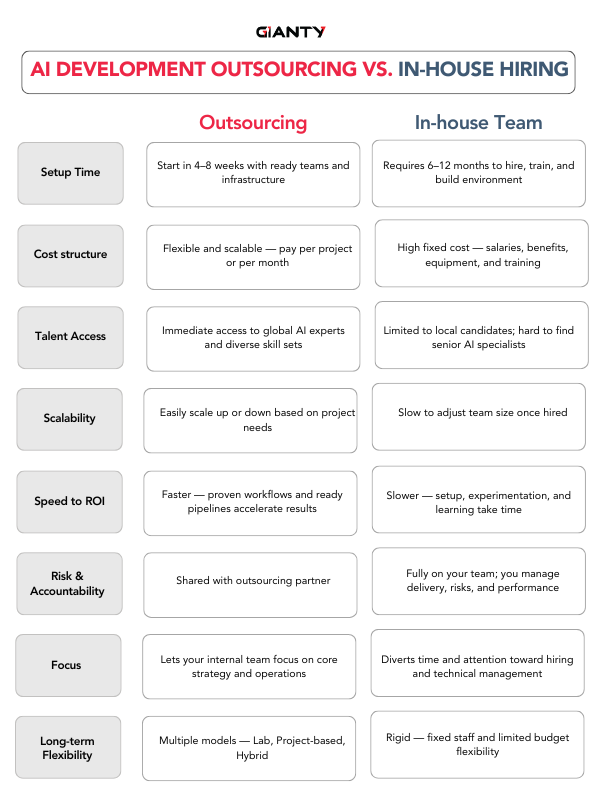
Both paths have distinct advantages but they serve different purposes. Hiring internally gives you long-term control, while AI development outsourcing provides speed, flexibility, and access to talent that’s difficult to find or retain.
The right choice depends on your organization’s maturity, project goals, and time horizon. Below are three common approaches large companies use to build AI capability today and each with its advantages and trade-offs.
Hiring Freelance AI Engineers
Freelance platforms like Upwork or Fiverr make it easy to find independent AI developers. They typically fall into two groups:
- Emerging freelancers who are eager to gain experience. They’re affordable but may lack enterprise-level expertise.
- Veteran specialists with deep technical backgrounds who prefer contract work over full-time employment. They deliver strong results but charge premium rates.
Freelancers can be helpful for quick experiments or limited-scope automation tasks. However, they are rarely a good fit for strategic, long-term AI programs. Because freelancers work independently and often move between projects, continuity, documentation, and scalability can quickly become pain points for enterprise teams.
Working with Vetted AI Engineers Through an Agency
AI talent agencies or staffing partners offer a middle ground between freelancers and full-service consultancies. They maintain a roster of pre-vetted engineers, often trained across the latest frameworks and tools/
For enterprises, this model provides:
- Quality assurance: engineers are screened for skill and reliability.
- Lower risk: agencies usually offer a trial or replacement guarantee if the match isn’t ideal.
- Reliable continuity: agencies document your project, allowing you to pause or scale work later without losing context.
This option is best for organizations that want to extend internal capacity quickly while keeping technical ownership in-house.
Partnering with an AI Development Outsourcing Company
For enterprises seeking measurable business outcomes rather than just technical support, an AI development outsourcing company or AI development partner offers the most comprehensive solution.
These firms handle the full AI development lifecycle from discovery and proof of concept (PoC) to deployment and integration. A structured approach like a six-to-eight-week PoC engagement helps validate ideas, align stakeholders, and deliver working prototypes before scaling.
Benefits include:
- End-to-end delivery with built-in governance
- Access to multi-disciplinary teams (data, AI, MLOps, integration)
- Faster time-to-value and clearer ROI tracking
- Ongoing maintenance and retraining after launch
This model fits enterprises that want to move fast, minimize internal friction, and ensure business impact from day one.
GIANTY works as your dedicated AI partner, providing a ready pool of AI talents and engineers who specialize in delivering practical, production-ready solutions and handle AI orchestration.
With delivery centers in Japan and Vietnam, we combine Japan-quality precision with SEA-based scalability, ensuring high performance, transparent communication, and competitive cost efficiency.
More importantly, we are built to move and scale with your business from early proofs of concept (PoC) to full AI system development and long-term integration. To match different business goals and levels of AI maturity, GIANTY offers three flexible engagement models: Lab Model, Project-Based Model, Hybrid Model.
How to Choose the Right AI Development Outsourcing Partner in 2025?
Choosing the right AI partner is about more than technical skills – it’s about finding a team that understands your business, your goals, and how to deliver measurable results.
Before committing, ask these key questions to find the right fit for your enterprise in 2025:
- Do they have proven experience delivering enterprise-grade AI projects?
Can they show real case studies, client results, or examples where their AI solutions improved efficiency, revenue, or decision-making? Look for experience that spans industries and technologies from automation and copilots and more.
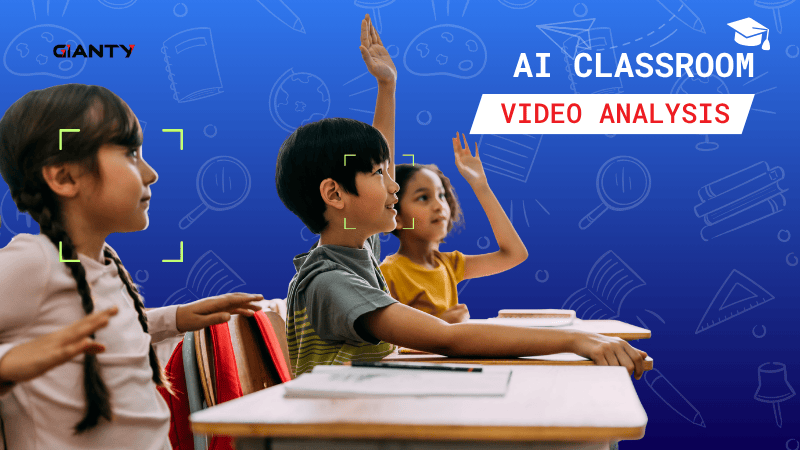
- How deep is their technical expertise across AI domains?
Do they have hands-on experience with LLMs, NLP, computer vision, or predictive modeling? Can they manage the full AI lifecycle – data preparation, model training, deployment, and monitoring?
- How do they handle security, compliance, and data privacy?
Are they compliant with standards like GDPR, ISO27001, or SOC2? What steps do they take to ensure ethical AI use, prevent data leaks, and safeguard sensitive information?
- What does collaboration look like day-to-day?
How do they communicate – weekly updates, progress reports, shared dashboards? Do they adapt to your workflow and pace, or expect you to fit into theirs? Cultural fit matters just as much as technical skill.
- Do they offer flexible engagement models?
Can you start with a short proof of concept (PoC) before scaling up? Do they provide models like dedicated AI labs, project-based contracts, or hybrid structures to fit different needs and budgets?
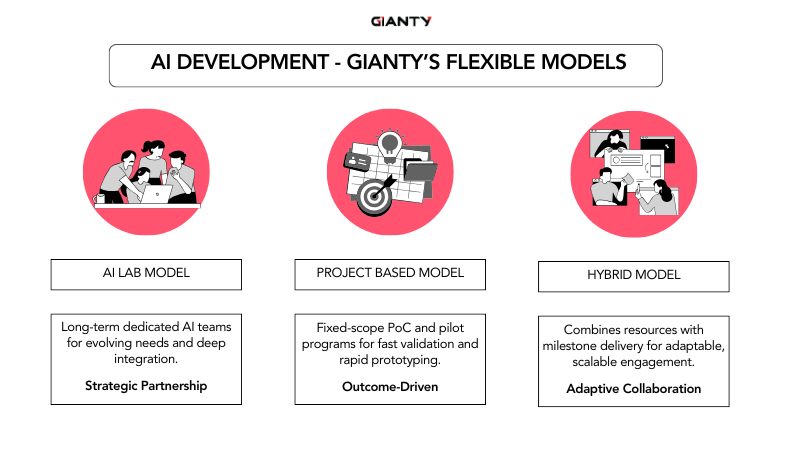
- How do they measure success and ensure ROI?
Do they define success in business terms – efficiency gains, cost savings, or faster delivery not just technical output? Ask how they track and report tangible results over time.
- What ongoing support and maintenance do they provide as an AI partner?
Do they help with model retraining, monitoring, and optimization after launch? A reliable partner doesn’t disappear after delivery — they help your AI evolve as your business grows.
Pro tip: The right AI partner feels like an extension of your enterprise, not just a service provider. Ask these questions early and you’ll know whether they can deliver both the speed and reliability your business needs.
AI Development Outsourcing: The Time to Move Is Now
If you’re still thinking, “We’ll do this later,” here’s the hard truth – 2025 is already too competitive to wait. AI adoption isn’t something happening “soon.” It already happened and continues to happen, transforming industries in real time. From smarter recommendations to faster decision-making, your competitors are already integrating AI and many are doing it faster by AI development outsourcing development.
Ask yourself: Can your enterprise afford to wait? If not, now is the time to turn strategy into execution. Partner with GIANTY to design, build, and scale AI solutions that deliver measurable business impact – faster, smarter, and built to last.



